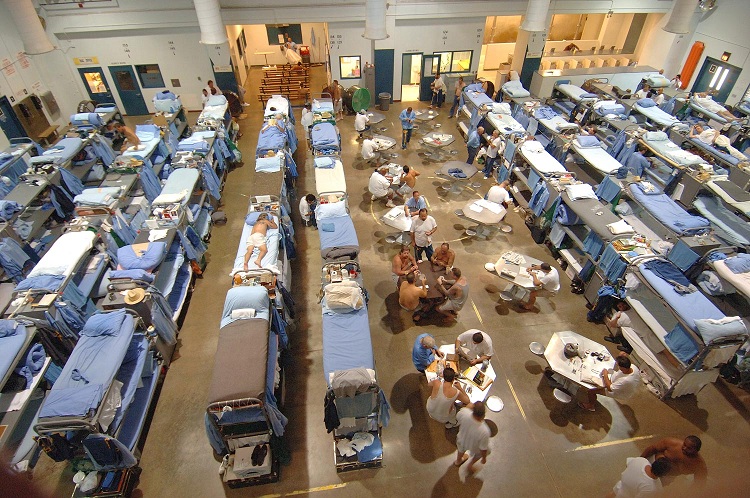
Incarceration is expensive, so first we’ll look at how much we spend per year. Next, we’ll look at the overall impact on crime. After all, the goal is to help ensure our safety isn’t it? Isn’t it? Finally, I’ll give a brief overview of the collateral consequences of incarceration. I’ll also try to provide a few links to other sources of information on the subject.
Expense
The total direct cost of incarceration in the United States in 2007 was $74 billion. For some reason, that’s the most recent number I can find. While I hate using data that’s 6 years old, I can assure you it hasn’t gone down any since then.
That’s $74,000,000,000.00 for those of us who have a hard time visualizing billion and trillion-dollar figures. Put another way, it is enough money to pay rent and community college tuition for around 4.6 million people, or about twice the number of people now incarcerated in the United States.
Now I’m not suggesting (at least not yet) we let people out of jail and send them to college. I just want us all to understand how much money we’re talking about. There’s a quote often mis-attributed to a U.S. senator that says “a billion here, a billion there, pretty soon, you’re talking real money”. I think it’s safe to say this is real money.
The lost work (jobs, income, taxes, etc.) and lost home productivity (lawn care, housework, childcare, etc.), along with the additional costs of social services and child welfare surely drives the total cost of incarceration well above the $74 billion mentioned earlier.
Don’t forget the additional cost of maintaining the criminal justice system on either end of the incarceration process. These costs include attorneys, judges, probation officers and associated court costs. I’m sure the overall dollar amount is staggering.
It’s impossible to accurately calculate the lost opportunity costs resulting from all this money not being available to be spent elsewhere, either in the private or public sector. But surely we’re getting something valuable from all this investment, right?
Crime Reduction
At first glance, it would seem that our trend toward mass incarceration should have some minimal effect on crime simply by removing the criminals from society. However, a closer look shows that the rate of incarceration has far outpaced any reductions we’ve seen in crime.
The rapid increase (65%) in incarceration between 1984 and 1991 actually corresponded with a 17% increase in the crime rate during that same period (The Sentencing Project). A smaller increase (47%) in incarceration between 1991 and 1998 resulted in 22% decrease in crime. In fact, states with smaller increases in incarceration sometimes show a greater reduction in crime.
It seems the more aggressive we are at incarceration, the more crime occurs, resulting in calls for more aggressive incarceration. It’s as if swatting a fly causes more to appear at varying rates. We may (or may not) reduce the overall number of flies at a given time but at what cost and to what ultimate effect? Should we keep swatting?
According to The Sentencing Project, the crime rate in 1970 was 3,985 crimes per hundred thousand people. In 2000 the rate was around 4,125. During that same period, the incarceration rate rose from 96 to around 470 per hundred thousand. That’s right; the crime rate is actually a little higher after a nearly 500% increase in the incarceration rate.
Collateral Damage
We know from the Adverse Childhood Experiences (ACE) study that having an incarcerated parent correlates with an increased risk for a variety of health and behavioral problems later in life. While that effect is surely significant for incarcerated fathers, can you imagine the impact of losing your mother to the criminal justice system? Again, Oklahoma has the special distinction of incarcerating women at a higher rate than any other state.
We can’t ignore the psychological impact on those incarcerated. In Oklahoma, certain prisons (Lawton Correctional Facility for one) have been called “gladiator schools” by inmates in reference to the level of violence. High rates of depression and PTSD are common among inmates. One study reports inmate PTSD rates on par with that of combat veterans.
“They got me rottin’ in the time that I’m servin’Tellin’ you what happened the same time they’re throwin’
4 of us packed in a cell like slaves – oh well” – Public Enemy, Black Steel in the Hour of Chaos (1989)
Surviving in prison also requires a different mindset and rules for behavior than what is normally expected in society. Those who don’t adapt to the rules probably won’t fare very well. Don’t trust anyone, hide your emotions, don’t be a snitch, show allegiance to your race; is it any wonder those who survive in prison often struggle once released?
Recidivism (a return to criminal behavior), besides being fun to say, is a significant problem. One would think the horrors of incarceration and the fear of losing freedom would discourage people from re-engaging in crime. That certainly isn’t the case, with recidivism rates for many crimes in the 60% to 70% range.
“I’d like to hold my head up and be proud of who I amBut they won’t let my secret go untold
I paid the debt I owed ’em, but they’re still not satisfied
Now I’m a branded man out in the cold” – Merle Haggard, Branded Man (1967)
Finally, the stigma of a felony conviction is considered a “life sentence” in many ways. Convicted felons are often excluded from jobs and housing. Many landlords won’t rent to felons and most major corporations (sometimes openly, sometimes covertly) discriminate against those with criminal records. Convicted felons are unable to own guns (regardless of the type of offense), even for hunting or personal protection. And offenders sometimes lose the right to vote depending on the State and their current legal status. For more on voting rights, check out the new book titles The New Jim Crow.
Summary
It’s obvious we’ve invested a significant amount of money on this addiction. At $74 billion in 2007 alone, we’ve easily invested over $1 trillion dollars (probably closer to $2 trillion) over the past 20 to 30 years. Looking at the crime rates from 1970 on, it doesn’t appear we’ve gotten much, if anything, in return. In fact, once we consider the collateral cost to individuals, families, communities and society as a whole, we’ve probably done a lot of net damage.
Are there alternatives? Can we reverse the trend and break this nasty habit? In Part 4, we’ll look at some current alternatives to incarceration and see what some states and other countries are doing differently .


